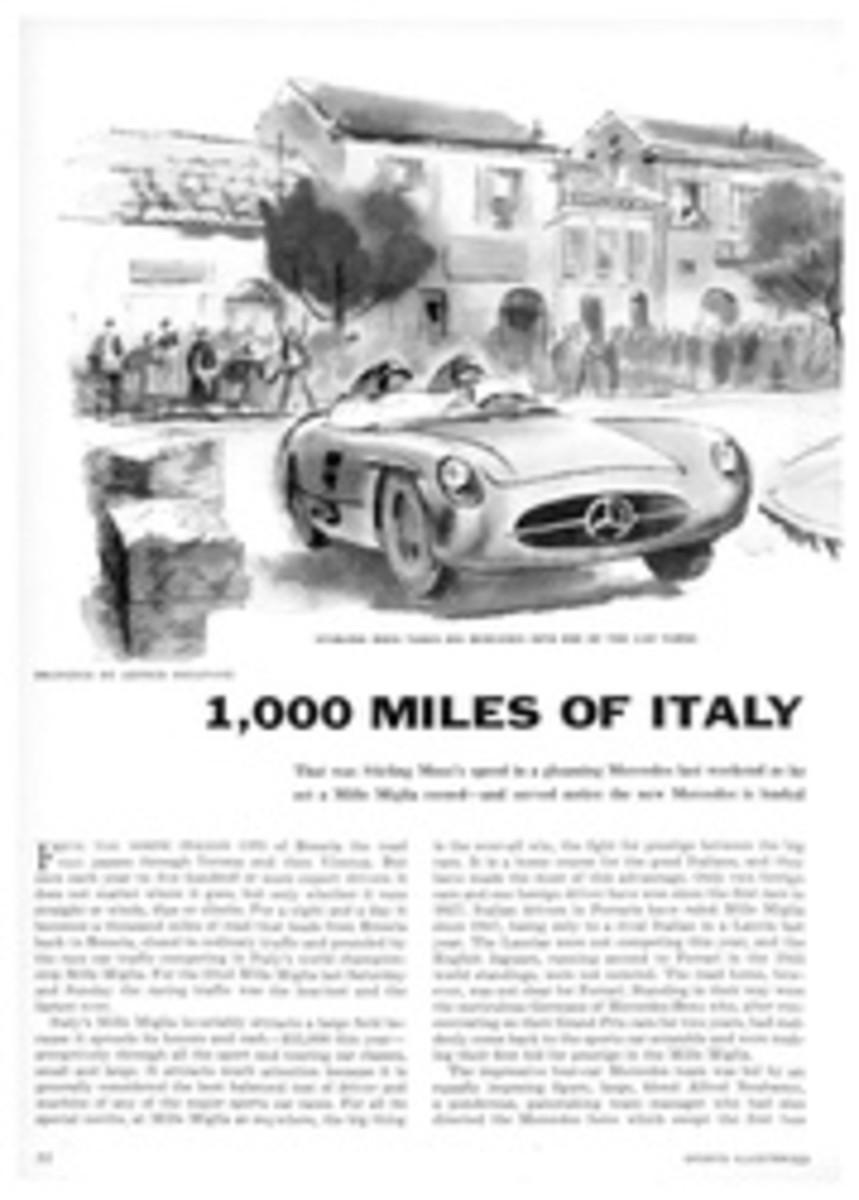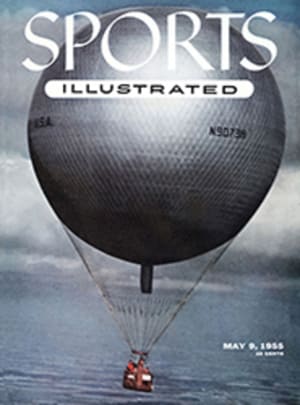
BYRON AND BEN IN TEXAS
Byron Nelson and Ben Hogan have won over 30 major golf championships between them, but in their long professional careers they have faced each other only twice in championship play-offs, once for the Texas Open in 1940 and the other time for the Masters' crown in 1942. On each occasion Nelson beat Hogan by a single stroke. Few people know, however, that they met once before in a play-off. This was for the caddy championship of the Glen Garden Country Club, in Fort Worth, Texas, when they were both 15. It was a meeting which had a decisive influence on the careers of these two ambitious lads.
Both boys entered golf by the same back door of the caddy house at Glen Garden. And eventually, through closely entwined if not exactly parallel careers, they gained fame, fortune and admittance through the front doors to the most exclusive golf clubs in the world.
John Byron Nelson Jr. was born in Ellis County, Texas, about 40 miles southeast of Fort Worth, February 4, 1912. His family moved to that city when he was 10 years old.
William Benjamin Hogan was born August 13, also in 1912, 81 miles to the west, in the small town of Dublin. Ben was nine years old when his father, a blacksmith and mechanic, died and his mother moved her family of three children, of whom Ben was the youngest, to Fort Worth.
Ben, a small kid, started caddying at 11 years of age. For newcomers to Glen Garden, the older caddies had a hazing routine which discouraged faint-hearted applicants for membership in the bag-carrying "union."
"They threw my cap, and me, down the big hill so many times I was sore all over," Ben remembers. And his mother adds, not without a note of pride, "Ben had to fight two or three boys to win his place. But, small as he was, he whipped them and no one else bothered him."
In the caddies' spare time, Ben, a left-hander, joined the others in whacking golf balls about the caddy grounds adjacent to the first fairway. At first he tried swinging left-handed with a right-handed club. This didn't last long. An older caddy, Charles (Bill) Akey, now a Fort Worth professional, kicked Ben in the seat of his britches every time he caught the little fellow swinging left-handed.
Ben used to jump out of bed before dawn on Saturdays and Sundays, eat a quick breakfast, and run to Glen Garden so he would have time to caddy two rounds. That meant $1.30 and tips each day of the weekend. When he'd get a dollar ahead—which wasn't often—he'd walk downtown to Grant's "five-and-ten" store, where they had a barrel full of "odd" golf clubs on sale for a dollar apiece, and make a choice. Even then, he sometimes couldn't find one with a straight shaft. But he got a start in golf.
Byron Nelson didn't join Hogan and the other caddies at Glen Garden until he was 13. He was allowed by his parents to caddy on Sunday only after he had been to church. Byron already was more than 6 feet tall, and thin. "We were all thin," Ben recalls. "Yes, and hungry," adds Nelson.
The caddies held driving contests among themselves when time permitted, and the boy who hit the shortest drive had to walk down, pick up the balls and bring them back for the next round. "That's why Ben learned to drive so far," Nelson states. "He was the smallest and was always losing and having to go pick up the balls. He got so tired of it that he started letting out more and more until finally he became the long driver he is today."
The big day for the caddies came just before Christmas each year when the annual caddy tournament was staged. After the competition there was a Christmas tree in the clubhouse, presents for the boys and a turkey dinner.
The 1927 Glen Garden caddy tournament, fourth the club had sponsored, was held on Friday, December 23. If there was a favorite to win this event, it was Nelson, who was by now a good 6 feet 2 inches tall and towered almost a foot above Ben. "Byron was a damn good player," says Hogan of that day.
Competition was at nine holes, medal play. The course, one of the few in Texas with grass greens at that time, played to a par of 37-34-71, and still does. Hogan and Nelson came to the ninth green even, and Ben appeared to be a "dark horse" winner when he got a par four for a two-over-par 39, while Nelson lay three on the green with his ball 30 feet from the cup.
But Byron calmly rolled the long putt into the hole for a four, a 39 and a tie. Then came the play-off. Both boys thought it would be sudden death. And on the first extra hole Ben made a par four, Nelson a six. Hogan believed he had won. But officials, after a discussion, decided the proper procedure was a full nine-hole play-off.
Nelson overcame that two-stroke deficit of the first hole, and at the ninth sank an 18-foot putt for a par four to beat Ben by a single stroke, 41 to 42. Nelson's prize was a mid-iron. Hogan was given a mashie.
The thought that he should have been the winner grew with Hogan. This, combined with the fact that once, after he had quit caddying, he was refused permission to hit a few shots in the caddies' area rankled him.
In 1928 Glen Garden members decided to honor an outstanding caddy by giving him a junior membership in the club, and Nelson was selected. So the tall, baby-faced Byron went under the wing of official Glen Garden sponsorship—he still holds an honorary membership in the club—and the little, sober-faced Ben drifted off to the municipal courses to play and practice. Not until recently did time ease the bitterness that these incidents had created. For many years Hogan would not even revisit Glen Garden.
Ben turned professional early in 1930, while still 17. Nelson followed him late in 1932, when he was 20. Nelson was the first to succeed in big-time competitive golf, but hard-bitten little Ben eventually fought his way to the very top and is considered by many to be the toughest competitive golfer who ever lived.
PHOTO
GANGLING Byron Nelson, at 16, had already begun to develop the slow upright swing which he later did so much to popularize.
PHOTO
LACONIC Ben Hogan was poker-faced even during his caddying days. He was developing his powerful flat swing at that time.

